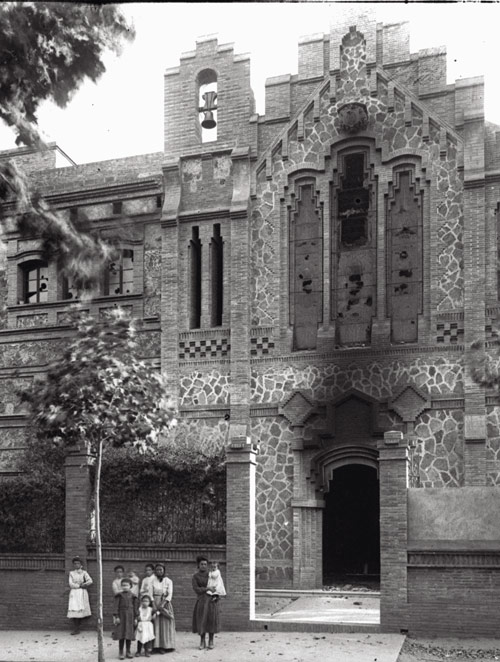La Escuela Moderna
2014
Archivo F.X. / Pedro G. Romero
Archivo F.X. is an institution working with a vast archive of images of anti-sacramental political iconoclasm in Spain between 1845 and 1945. These images are classified according to a critical index of terms comingfrom the visual constructions of the broad field of the radical modernist project. For instance, a psychotechnic cell, or cheka, from the Santa Úrsula convent in Valencia is called Barracão, after the work by Hélio Oiticica.

The presentation centred on La Escuela Moderna [The Modern School] for the 31st Bienal works in several different ways. On one hand, it is a parodical portrait – in the classic sense of parody – of art’s archaeological and genealogical drives today, and reveals the existence of a secret movement that connects the rationalist pedagogy introduced by the Catalan educator and anarchist Francesc Ferrer i Guàrdia, which spread throughout Spain and other European countries, USA, the Philippines and Latin America, with some of the radical manifestations of art in our day. On the other, the display is also a commentary on the excesses of the so-called pedagogic shift that seems to have found in the field of the visual arts a practical purpose and a comfortable political design for the overflow that comes from working with the unknown. Additionally, it addresses the failure of the radical modern project with paradoxical joy, accepting it as its own failure, in the knowledge that the rubble from its ruins makes the bestmaterial for the architecture of our present.


The connections between the Escuela Moderna and modern art are notable. Ferrer admired Ramón y Cajal’s scientific drawings (the installation design for the 31st Bienal takes them as its model) and Kupka’s social projections. Jean Vigo’s Zéro de conduite or Las Hurdes: Tierra sin pan (both 1933), directed by Luis Buñuel and produced by Ramón Acín, are heavily influenced by it (both are screened in the installation). Man Ray began his artistic career at the Ferrer Center in New York. José Oiticica, Hélio Oiticica’s grandfather and most direct influence, started his political journey by mentioning Ferrer, and he supported the introduction of the Escuela Moderna in Brazil. In 1908 a school doctrinally linked with the Escuela Moderna was opened in São Paulo. – PGR